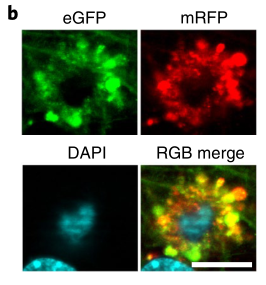It's not amyloid beta that causes Alzheimer's disease, Nature confirms!
Alzheimer's disease (AD), commonly known as senile dementia, is a degenerative disease of nervous system that occurs more frequently in people over 65 years old.
The accumulation of extracellular β amyloid protein in the brain (also known as senile plaques) is the main lesion of Alzheimer's disease, and the theory of β amyloid protein is also considered to be the main pathogenesis of Alzheimer's disease.
Based on this, scientists hope to prevent and treat Alzheimer's disease by inhibiting the production, fibrosis and deposition of beta amyloid protein. However, the effect is not satisfactory. Currently, existing drugs can only delay the aggravation of pathological symptoms, but can not prevent or reverse the disease process, and it is easy to relapse after drug withdrawal.
Knowing a lot of pathological mechanisms, we are still unable to enter the door, which does not prevent us from thinking: are we really touching the root cause of Alzheimer's disease, or are we blinded by its appearance and ultimately treating the symptoms instead of the root cause?
A new study from the Grossman School of Medicine at New York University in collaboration with the Nathan Klein Institute overturns the traditional view of Alzheimer's disease that "the formation of extracellular amyloid plaques precedes the death of nerve cells," suggesting that "the death of nerve cells precedes the appearance of extracellular amyloid plaques." In this sense, even if the extracellular amyloid plaques are removed, the affected cells are already dead, and what can be done about it?
The study was titled "Faulty autolysosome acidification in Alzheimer's disease mouse models induces autophagic build-up of A beta in neurons, yielding senile plaques "was published June 2 in Nature Neuroscience.

Researchers believe that the onset of Alzheimer's disease begins with a malfunction of nerve cells called autophagolysosomes, or more specifically, "acidification."
Autophagic lysosomes are formed by the fusion of autophagic vesicles and lysosomes. If the lysosomes are compared to a garbage treatment plant, the autophagic vesicles are equivalent to "garbage carriers", transporting damaged proteins, nucleic acids and organelles to the lysosomes for decomposition and digestion.
Hydrolytic enzymes in lysozyme need an acidic environment to play the role of digestion and decomposition, and this acidic environment mainly relies on proton pump vATPase to pump H+ ions in cytoplasm into lysozyme. Once lysosome acidification is impeded, the garbage decomposition line will stop, resulting in the formation and accumulation of a large number of waste intermediate products in lysozyme. This includes amyloid beta and its precursors.
When the lysosomes can no longer withstand the rupture, the hydrolytic enzymes in the lysosomes are released into the cytoplasm, breaking down the cells, collapsing the cell membrane, and spilling intracellular waste to the floor, eventually forming what we see as "extracellular" amyloid plaques. In other words, cell death precedes the formation of extracellular amyloid plaques, or even the remains of dead nerve cells mixed with amyloid beta.
So how did the researchers prove their conclusion?
First they needed to observe lysosomal acidification disorders in nerve cells in Alzheimer's mice that predate cell death and the formation of extracellular amyloid plaques.
And see how they distinguish between normal and acid-impaired autophagolysosomes:
Series in red - green fluorescent probe specific markers of autophagy in the nerve cells (mRFP - eGFP - Thy - 1 LC3, TRGL mice), when the red and green fluorescence of the autophagic vesicles fused together, emitting yellow fluorescence.
When the autophagosome combines with the lysosome, the yellow fluorescence gradually turns into red fluorescence due to the acidic environment in the lysosome. Coupled with the blue fluorescent label (CTSD) of the lysosome, the resulting autophagolysosome shows purple fluorescence. This is the autophagolysosome with normal acidification function.
If the lysosome acidification function is disabled, the yellow fluorescence of the autophagosome will remain red after fusion, and the blue fluorescence mark of the lysosome will be added, and the resulting autophagolysosome will show white fluorescence. This is the autophagolysosome with acidification function dysfunction.

When the probe was applied to model mice with Alzheimer's disease, the researchers observed that 90 percent of the autophagolysosomes in the neocortician region of the brain were already acidifying at five months after birth, at least five months before the onset of amyloid plaques in the brain (10-12 months).
In 5xFAD mice with early-onset Alzheimer's disease, the onset time of autopolysosomal acidification disorder was even earlier. The autopolysosomal acidification disorder and nerve cell degeneration were found in the brain of 5xFAD mice at the age of 2 months.

Correspondingly, the proton pump vATPase activity on the lysosomes of nerve cells of these Tg2567 mice decreased significantly at 6 months postnatal compared with wild-type mice of the same age (65.6 ± By the 12th month, the figure was less than half (45.3 ± 3.7 percent).
The acidification-impaired autopolysosomes are unable to digest the damaged proteins, resulting in the accumulation of waste intermediates, products of β-amyloid precursor proteins (APP-βCTF), and β-amyloid proteins in the autopolysosomes.

Not only that, but the autolysosomes, like petals, fuse with each other around the nucleus to form a corolla of structures called PANTHOS(poisonous flowers), and the nerve cells that contain the poisonous flowers are called poisonous flowers.

With the progression of the disease, the "poison flower neurons" in addition to the increase of beta amyloid protein in the cells, but also gradually toward the direction of age spots, if the 2.2 month old 5xFAD mice brain only half of the "poison flower neurons" In 5xFAD mice aged 6 months, the proportion was more than 95%.
Eventually, the nucleus in the center of the poison flower disappears, the permeability of the lysosome increases, the enzymes in the lysosome are released into the cytoplasm, the integrity of the cell membrane of the nerve cell is lost, the cell is declared dead, and the remains become what we see "Extracellular plaque", more and more "poison flower neurons" together, the plaque area is further enlarged.

As for the hesitantness of Alzheimer's treatment, this study is no different The cause of Alzheimer's is not outside the cell, but inside the cell. The key to reduce plaque generation and avoid cell death is to "repair the garbage treatment plant" and restore the acidifying function of lysosomes.
In fact, the team's research, published in Science Advances in April, has shown that by improving lysosomal acidification, it can significantly reduce nerve damage in Alzheimer's mice!
Hopefully this time we are truly on the path to truth and hope.


